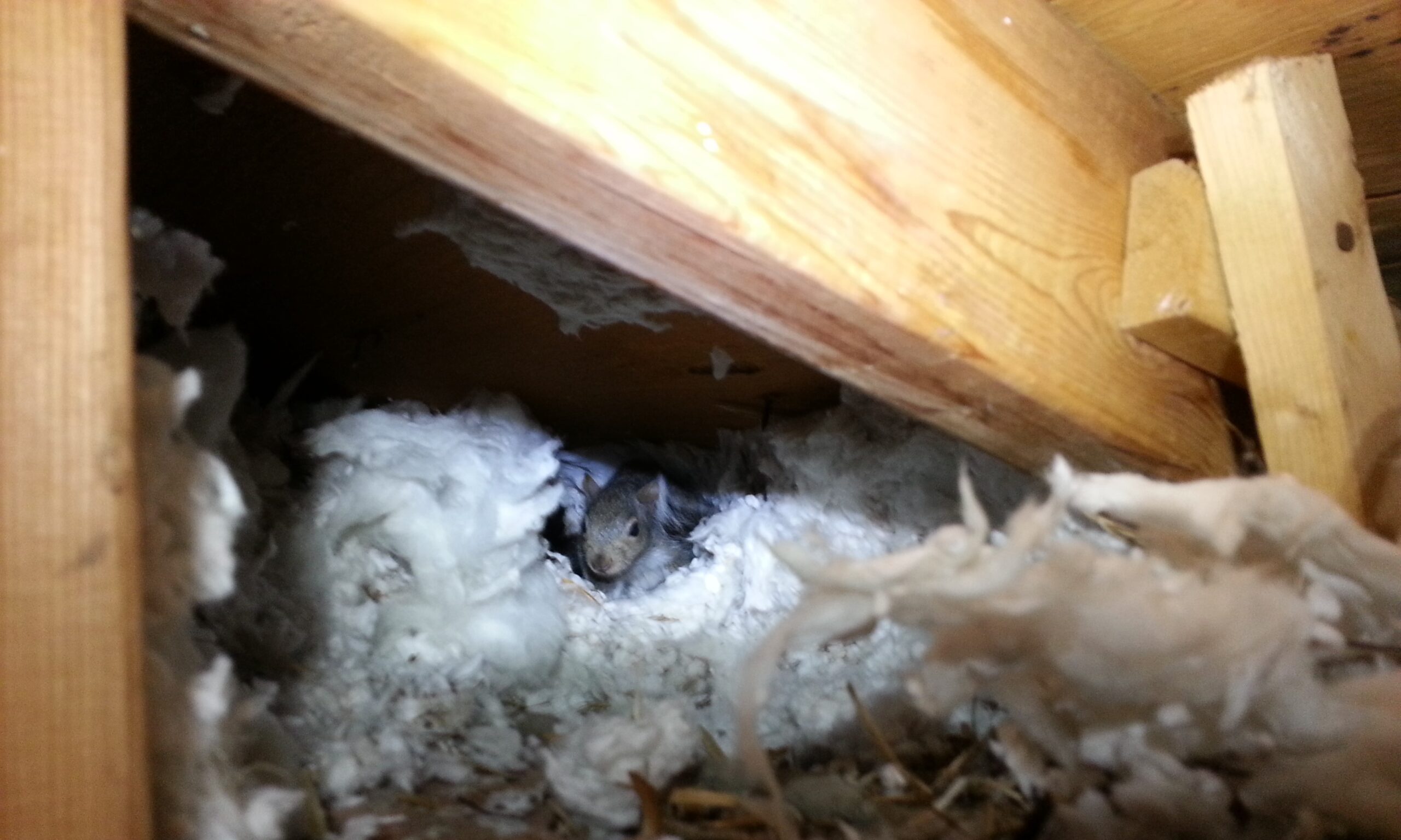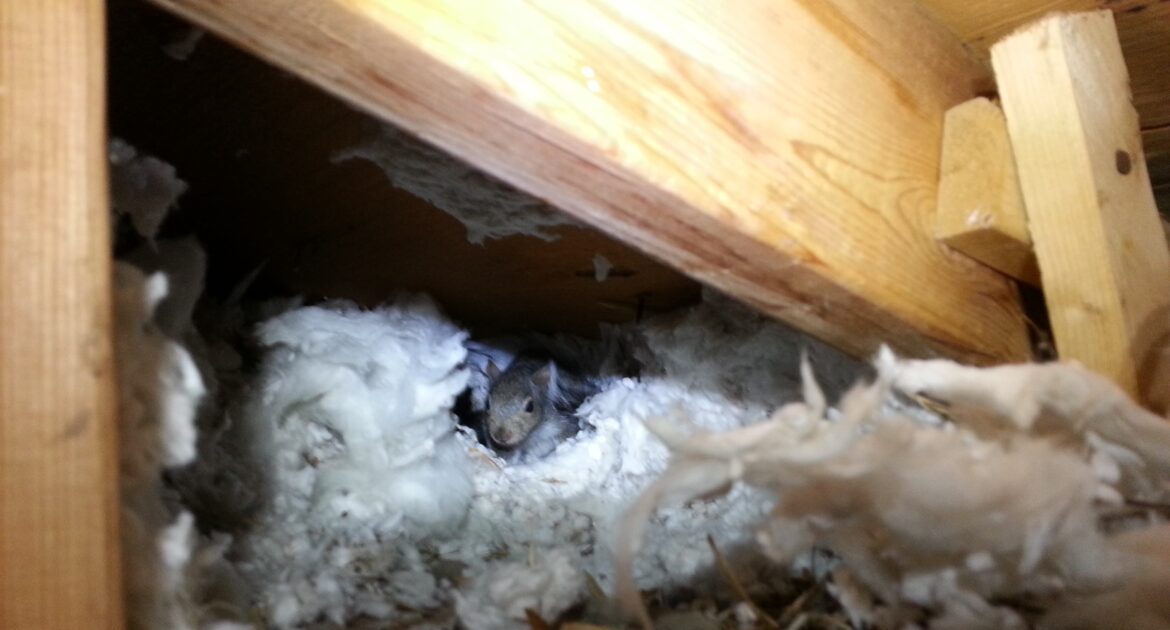Squirrels in your home can be more than just annoying—they can cause serious damage and attract other wildlife. These animals can squeeze through tiny gaps and chew through weak spots, making it hard to keep them out without proper preparation. So, how can you protect your home from squirrel invasions?
Start by learning how squirrels get inside, what their nests look like, and the best ways to keep them away. With the right steps, you can secure your home and avoid future problems.
If you’re in Baltimore, Skedaddle Humane Wildlife Control is here to help. We specialize in ethical, humane wildlife removal and can quickly protect your property. Ready to take action? Here’s what you need to know to stay one step ahead of the squirrels!
Identifying Entry Points
Squirrels are incredibly clever when it comes to finding ways inside your home. They look for weak spots in your house’s exterior, such as gaps, roof damage, or uncovered vents. Recognizing and addressing these entry points is an essential early step in preventing them from moving in.
Here’s a breakdown of the most common points of entry:
- Attic Vents: These small openings are often covered by thin materials that squirrels can chew through or squeeze behind. If left unprotected, attic vents provide direct access to your roof space—a perfect place for nesting. Use heavy-duty metal screens to secure these openings.
- Rooflines: Gaps along rooflines happen as your house shifts and ages. Most of the time, these gaps are small, but squirrels only need a space about the size of a golf ball to get through. Regular roof inspections can help you locate and seal these vulnerabilities.
- Chimneys: An uncovered chimney is an easy tunnel straight into your home for squirrels. Once inside, they can explore or settle into your attic. Installing a strong chimney cap is a proactive way to block this access while keeping your chimney functional.
An inspection of your property is the most effective way to pinpoint areas needing attention. Regular upkeep and awareness of these weak spots can save you from dealing with larger squirrel-related problems later on.
Securing Potential Access Points
After identifying entry points, the next proactive step is to secure them immediately. This means reinforcing these areas and ensuring no spaces are left vulnerable. Simple repairs and preventive measures can go a long way in protecting your house.
Start by sealing all visible gaps or cracks around your property. Areas such as windows, door frames, and roof joints are common spots where small openings can appear over time. Filling these with durable caulk or covering them with metal mesh can block squirrel access effectively.
Another crucial area to address is your chimney. By installing a chimney cap, you not only block squirrels but also prevent other wildlife from venturing in. Similarly, attic vents should be equipped with heavy-duty covers. These ensure airflow isn’t affected while keeping wildlife out.
Don’t ignore the benefits of weatherproofing, either. Properly sealing your home isn’t just good for energy efficiency—it’s also a solid deterrent for squirrels. By closing off all possible access points, you’re taking a comprehensive and proactive step to protect your property.
Keeping Trees and Vegetation in Check
The landscaping around your home plays a bigger role in squirrel prevention than you may think. Overgrown trees and dense vegetation can give squirrels the pathways and cover they need to approach your house. Keeping your yard in check is an easy and effective deterrent.
Start with your trees. Squirrels use branches to climb onto roofs. If any branches hang close to your house, trim them back to keep these natural bridges out of reach. Shrubs and plants near your home’s foundation are another problem. If they grow too dense, they can give squirrels a place to hide or nest. Regularly pruning these keeps the area open and less inviting.
Bird feeders are another factor to consider. While they’re great for attracting birds, they can just as easily attract squirrels. If you enjoy feeding birds in your yard, make sure to place feeders far away from your home. This creates a buffer zone that makes it harder for squirrels to access your property.
Yard maintenance is a simple yet proactive step that can keep your property less appealing to squirrels. Regular efforts to cut back vegetation and keep feeders far from your house can make a noticeable difference.
Removing Attractants
Squirrels are often drawn to your property in search of food. If they find easy meals, they’re likely to keep coming back. Taking simple steps to eliminate these attractants can go a long way in preventing squirrels from becoming unwanted visitors.
- Secure your garbage bins with tight-fitting lids that squirrels can’t nudge open. For added protection, store bins inside a garage or shed.
- Never leave pet food outside unattended, even in small amounts. Always store pet food indoors and clean up thoroughly if feeding outdoors.
- Regularly pick up fallen fruit from any trees in your yard. Sweet treats like these are a major draw for squirrels.
- Keep your yard clear of debris such as leaves and branches, which squirrels could use for nesting material.
By removing the things that attract squirrels, you’re creating an environment that doesn’t encourage them to stick around. A little effort now can save you the hassle of dealing with these persistent intruders later. Prevention is always the best approach!
Spotting Squirrel Nests Early
Sometimes, despite your best efforts, squirrels may still find their way into your home. The key to preventing bigger problems is to catch signs of their presence early. Knowing what to look for will help you act quickly.
Squirrel nests are typically made of twigs, leaves, and other soft materials like insulation or fabric. Outside, these nests appear as large clumps high in trees or tucked under eaves. Inside your house, they may be hidden in attics or wall cavities. Keep an eye out for shredded insulation or piles of debris—these are clear signs of a nest.
If you spot evidence of a nest, it’s important to act immediately. Removing a nest early prevents squirrels from settling in and causing more damage. Once the nest is gone, close all entry points to keep them from returning. Addressing issues quickly makes your house less inviting to wildlife and ensures the problem doesn’t worsen.
Humane Deterrents
When it comes to keeping squirrels out, humane solutions are both effective and ethical. These methods deter squirrels without harming them, ensuring your property stays protected while respecting wildlife. Here are five humane deterrents you can try:
- Motion-Activated Devices: Devices like sprinklers or lights that activate when movement is detected can startle squirrels and discourage them from sticking around. These are simple to set up and create an unpredictable environment that squirrels avoid.
- Scent-Based Deterrents: Certain scents, like peppermint or predator urine, are unpleasant to squirrels. Applying these around key areas of your property can help keep squirrels at a distance.
- One-Way Doors: These are perfect for squirrels that have already made it indoors. One-way doors allow squirrels to leave your house but block their ability to return. This humane method ensures they are safely removed without trapping them.
- Reflective Objects: Hanging reflective items like mirrors or aluminum strips can deter squirrels with their unpredictable flashes of light. They’re cheap, easy to install, and effective for problem spots like gardens or rooflines.
- Noise Makers: Noise-based repellents can disrupt the calm environment squirrels usually seek. Ultrasonic or manual noise makers can work well in attics or garages where squirrels are likely to create nests.
Using humane methods like these makes your property less appealing to squirrels in a way that aligns with eco-friendly practices.
Keep Your Home Squirrel-Free
Preventing squirrel intrusions starts with proactive steps to protect your property. Identifying and securing entry points, maintaining your yard, removing attractants, monitoring for nests, and using humane deterrents can all make a big difference.
If you’re still facing challenges or want professional help, Skedaddle Humane Wildlife Control specializes in wildlife removal in Baltimore that’s both ethical and effective. We can help safeguard your property so you can enjoy a squirrel-free home without worry. Reach out to us today to learn more about how we can keep your home protected.




